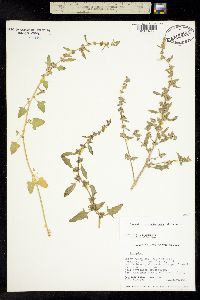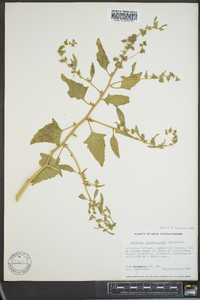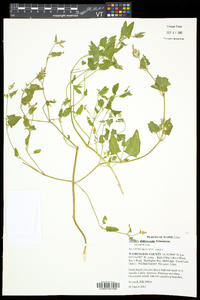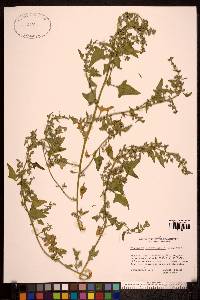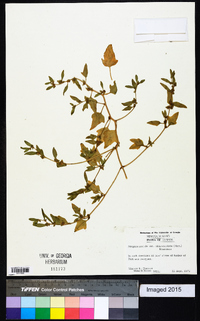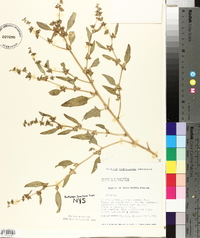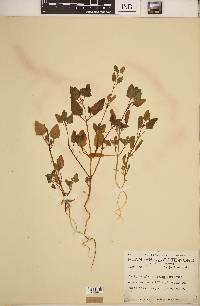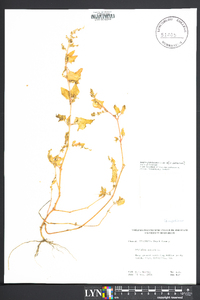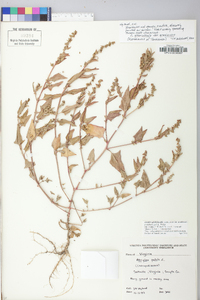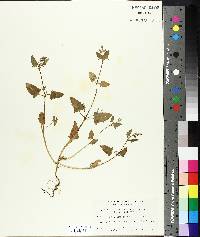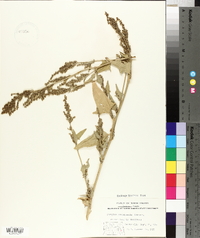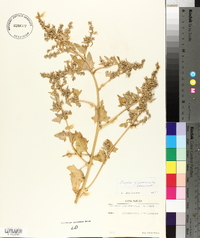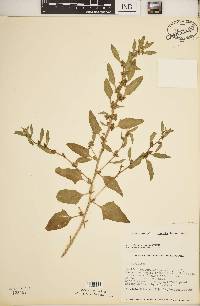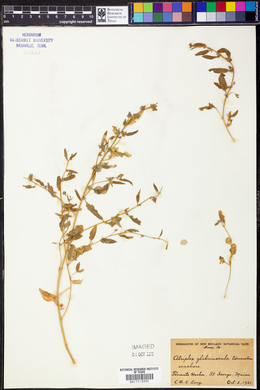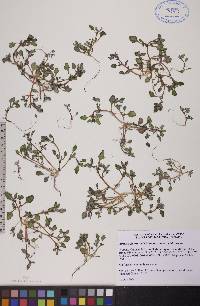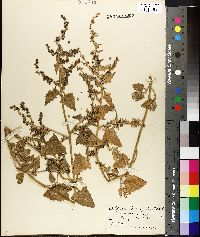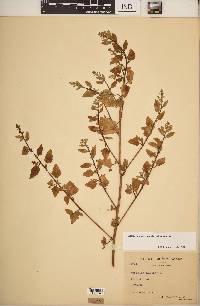
|
|
|
|
Family: Amaranthaceae
Scotland Orache
[Atriplex babingtonii] |
Herbs, monoecious, prostrate or sprawling, or sometimes erect, branched, (1-)2-10 dm; branches opposite or subopposite. Stems green and striped, often blue-green when fresh, weakly ridged, sparsely scurfy to glabrous. Leaves: petiole 0.2-2.5(-3.5) cm; blade all entire or some or all triangular or lance-hastate with lobes spreading to antrorse, 5-100 × 3-80 mm, base abruptly to narrowly cuneate, entire or irregularly toothed. Flowers in loose glomerules, arranged in foliose, interrupted spikes or axillary, terminating stems and branches. Bracteoles green, becoming black or reddish to yellow brown, sessile or some short stipitate, venation obscure, ovate-triangular to rhombic-triangular, 5-13 mm, margin united almost to middle, with few irregular teeth or entire, apex abruptly acuminate, faces irregularly muricate, tuberculate, or smooth, inflated, spongy inner layer strongly developed at bracteole base. Seeds dimorphic: brown, 2.5-4 mm wide (often the only ones present), or black, (1.2-)1.5-2.9(-3) mm wide; radicle median, ± antrorse, of brown seed basal and spreading. 2n = 18, 36. Members of the Atriplex glabriuscula complex occupy saline or brackish marshes and saline coastal strands mainly in the eastern maritime provinces of Canada, with extensions in similar habitats into the northeastern United States. They are seldom, if ever, ruderal weeds and appear to be indigenous or perhaps early introduced in some part from similar European habitats. The constituent taxa have been regarded at specific level (P. M. Taschereau 1972; I. J. Bassett et al. 1983). They are, however, alike in all major morphologic features, and are apparently closely allied. For those who wish to treat them at specific level, the names are supplied in the synonymy.
Plants to 1 m, prostrate to sometimes erect; lvs green, the principal ones mostly 4-10 cm, usually deltoid-hastate and irregularly toothed above the lobes; infls of loose glomerules forming a terminal thyrse, leafy-bracteate throughout; fruiting bracteoles spongy- thickened toward the base, obscurely veined, mostly 5-13 mm, united nearly to the middle, ovate-triangular to rhombic-triangular, abruptly acuminate, the lateral angles rounded, with a few small teeth or entire, the back often roughened; brown seeds 2.5-4 mm wide; black seeds smaller, 1.5-2.5 mm wide, or wanting; radicle median, ascending; diploid on x=9. Sea beaches; Nf. and Que. to R.I., and widespread on the Atlantic coast of Europe, whence probably intr. (A. patula ssp. g.) Gleason, Henry A. & Cronquist, Arthur J. 1991. Manual of vascular plants of northeastern United States and adjacent Canada. lxxv + 910 pp. ©The New York Botanical Garden. All rights reserved. Used by permission. |
This project was made possible in part by the Institute of Museum and Library Services [MG-70-19-0057-19].
Powered by Symbiota

